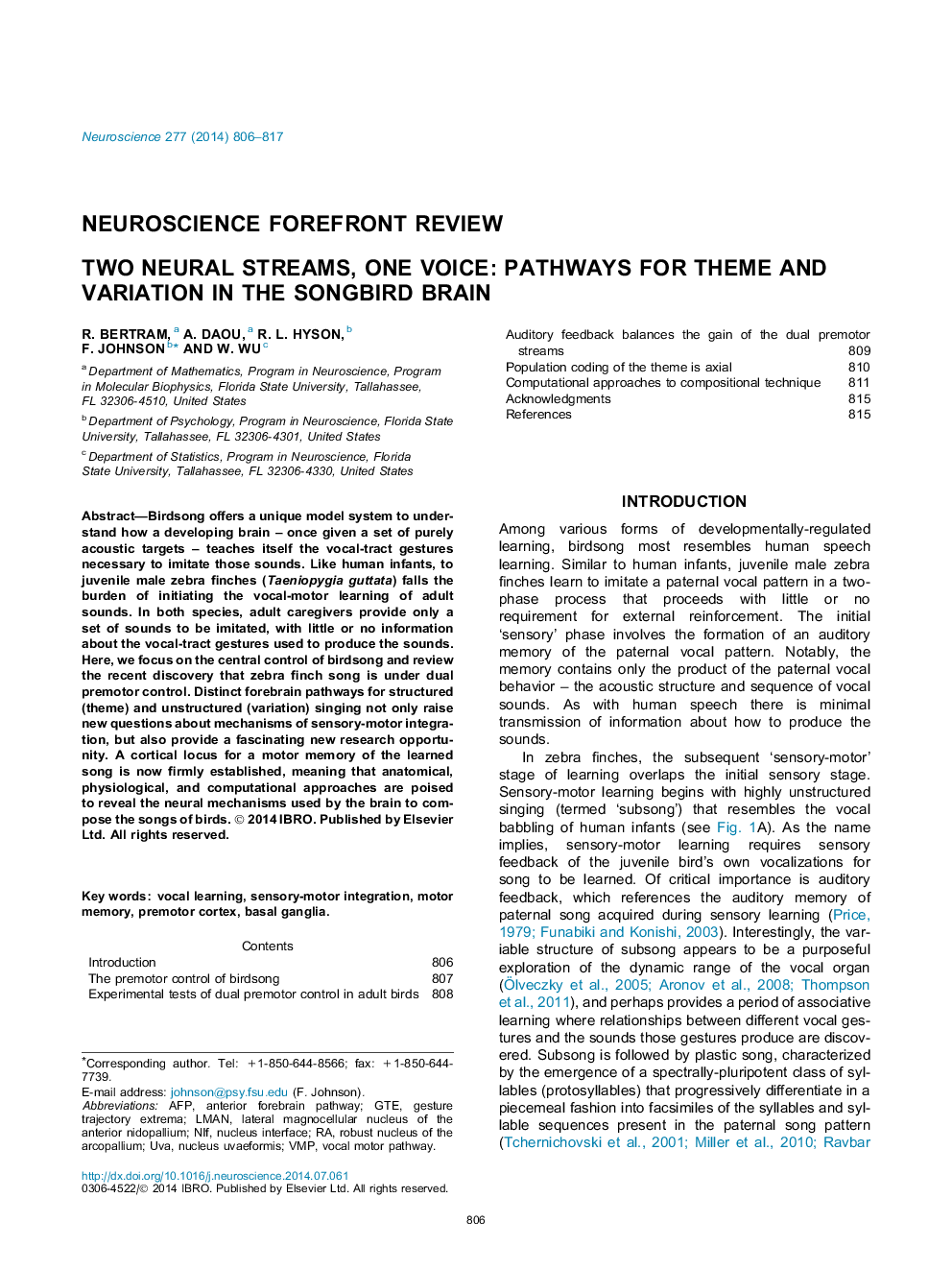| Article ID | Journal | Published Year | Pages | File Type |
|---|---|---|---|---|
| 6273545 | Neuroscience | 2014 | 12 Pages |
Abstract
Birdsong offers a unique model system to understand how a developing brain - once given a set of purely acoustic targets - teaches itself the vocal-tract gestures necessary to imitate those sounds. Like human infants, to juvenile male zebra finches (Taeniopygia guttata) falls the burden of initiating the vocal-motor learning of adult sounds. In both species, adult caregivers provide only a set of sounds to be imitated, with little or no information about the vocal-tract gestures used to produce the sounds. Here, we focus on the central control of birdsong and review the recent discovery that zebra finch song is under dual premotor control. Distinct forebrain pathways for structured (theme) and unstructured (variation) singing not only raise new questions about mechanisms of sensory-motor integration, but also provide a fascinating new research opportunity. A cortical locus for a motor memory of the learned song is now firmly established, meaning that anatomical, physiological, and computational approaches are poised to reveal the neural mechanisms used by the brain to compose the songs of birds.
Keywords
Related Topics
Life Sciences
Neuroscience
Neuroscience (General)
Authors
R. Bertram, A. Daou, R.L. Hyson, F. Johnson, W. Wu,
